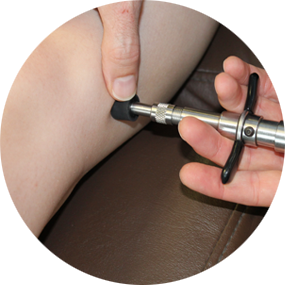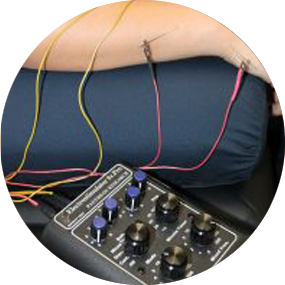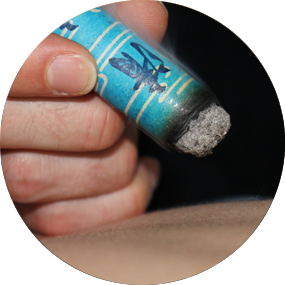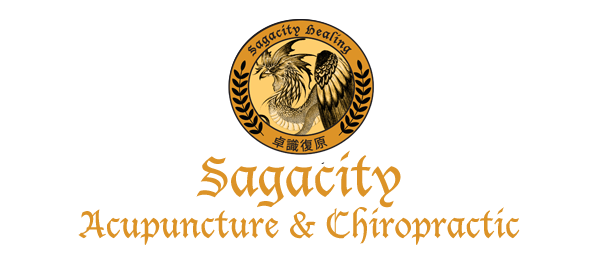Chiropractic
- Spinal adjusting
- Extremity adjusting
- Cranial adjusting
- TMJ adjusting
- Myofascial release
- Trigger point therapy
- Flexion distraction / Cox decompression
- Activator instrument assisted adjusting
- Thompson table drops
- SOT pelvic category blocking
3 Key Services

Extremity Adjusting
The joints of the body that are outside the spinal joints are called extremity joints. These joints include the ribs, jaw (TMJ), shoulder and elbow, cranial bones, wrist and hand, hip, knee, ankle and foot, as well as the hands and toes. In a very similar way as the spine, extremities can have fixations, subluxations, and joint motion restrictions. Adjusting the extremities helps to restore the original and proper alignment of the joint which allows it to have normal and proper function. Learn more about the doctor’s CCEP training.

Microcurrent electrical stimulation
Microcurrent is a form of electrical stimulation in the microamp range. This level of electrical stimulation is closer to bodies electrical cell to cell signaling level. It has been shown to help regrow bone (surgeons use a similar device (bone growth stimulator), it can re-grow nerves, and can increase cellular ATP production by 500%. It can increase tissue healing and reduce pain.

Moxibustion
Moxibustion is a traditional Chinese medicine technique that involves the burning of an herb called mugwort, to facilitate healing. The purpose of moxibustion, as with most forms of traditional Chinese medicine, is to strengthen the blood, stimulate the flow of qi, and maintain general health. In Western medicine, moxibustion has successfully been used to turn breech babies into a normal head-down position prior to childbirth. A landmark study published in the Journal of the American Medical Association in 1998 found that up to 75% of women suffering from breech presentations before childbirth had fetuses that rotated to the normal position after receiving moxibustion at an acupuncture point on the Bladder meridian.
Acupuncture
- Acupuncture
- Acupressure
- Moxibustion
- Herbal medicine
- Nutrition, diet or other supplements
- Electro-acupuncture
- Cupping
- Heat/Cold Therapy
Herbal treatment
Diet, food, nutrition, vitamins, minerals, glandulars and plants are all used either on the body (topically) or in the body (ingested) as a part of herbal medicine.
Traditional Chinese herbal medicine draws on ancient practices — herbal medicine is as old as humanity itself. Early man’s survival was depended on their knowledge of their environment. Direct experience taught them which plants were toxic, which ones imparted strength and sustained life, and which had special healing qualities. Many of our current prescription medications were derived from herbs and plants.
Herbs are concentrated foods taken from nature and compounded in such a way to help the body heal itself. Today’s herbalist adjusts traditional formulas based on new knowledge, taking the best from both worlds. Knowledge and use of current vitamins and supplements is part of the persons healing program.
Physical and adjunctive therapies
- Electrical muscle stimulation
- Micro current electrical stimulation
- Ultrasound therapy
- Neuromuscular re-education
- Therapeutic exercise
- Home exercise program
- Fitness plan
- Training program (i.e. marathon, competition, etc.)
Diagnostic
- X-ray
- Digital motion X-Ray
- CT scan
- MRI
- Diagnostic Ultrasound
- Blood chemistry panels
- Functional capacity evaluations
